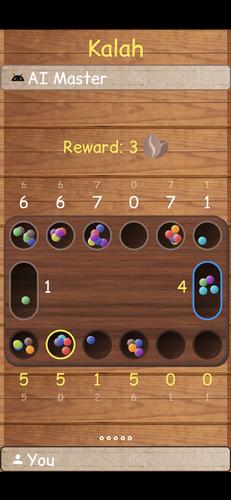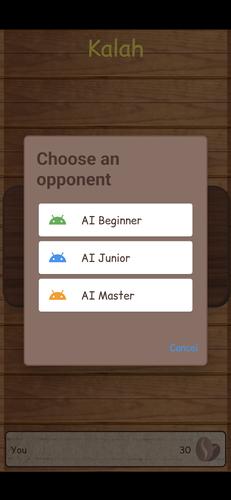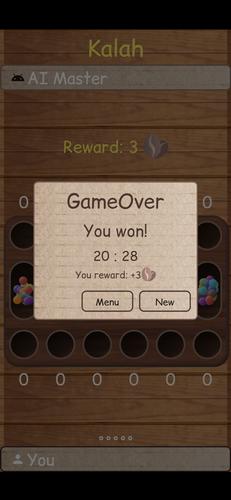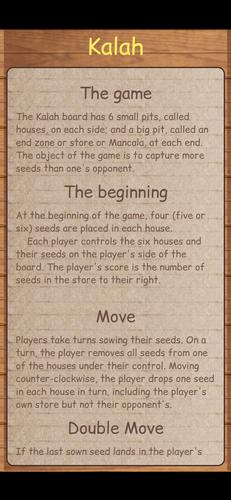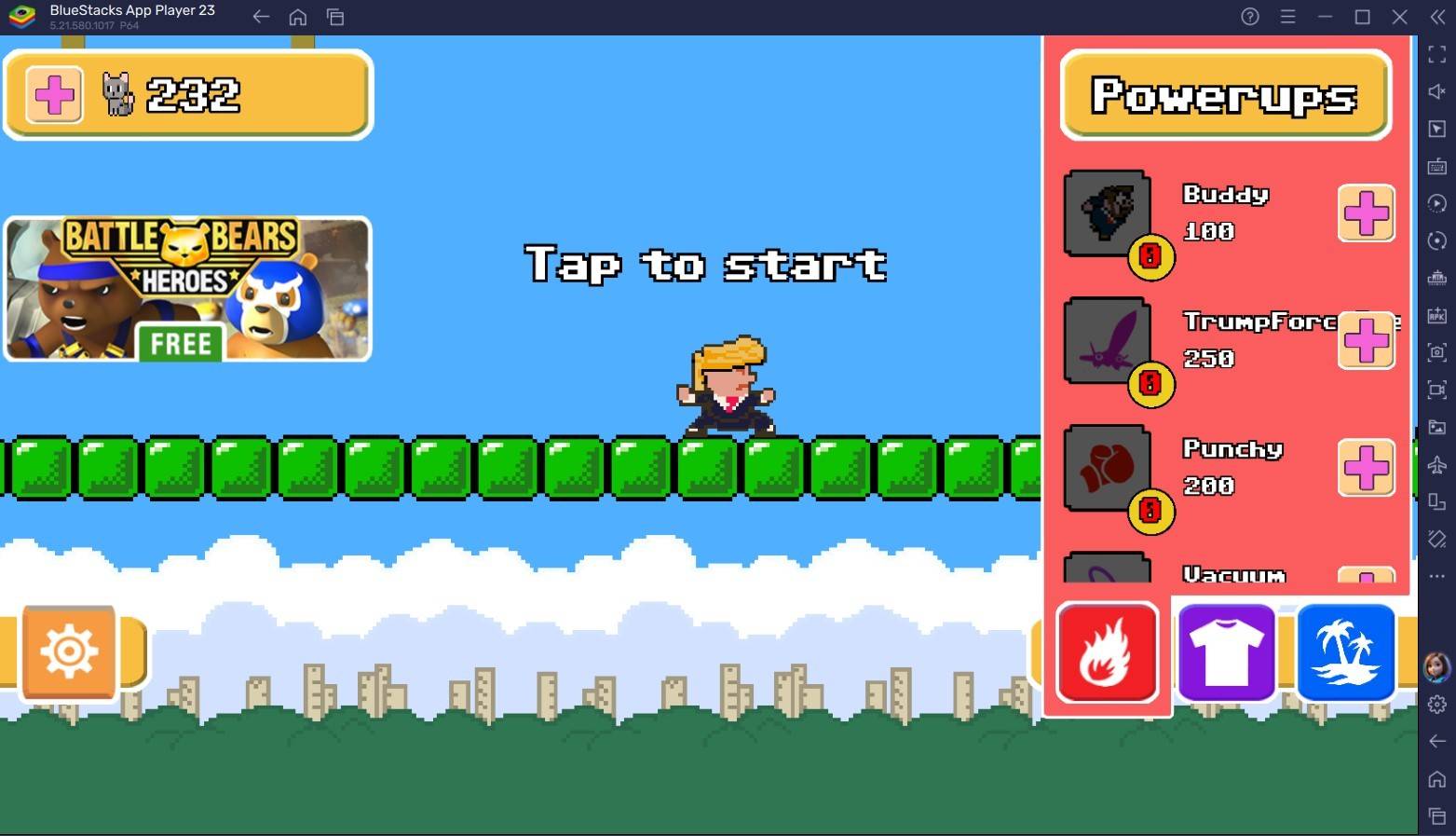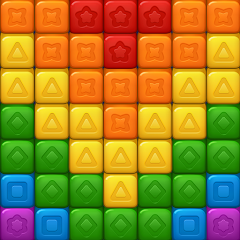Mancala games belong to a diverse family of two-player, turn-based strategy board games traditionally played with small stones, beans, or seeds and rows of holes or pits in the ground, on a wooden board, or other surfaces. The primary goal typically involves capturing all or a specific number of your opponent's pieces. (Wikipedia)
Within the mancala family, there are many popular variations, including Oware, Bao, Omweso, and more.
This application offers an implementation of several classic Mancala games—Kalah, Oware, and Congkak—each with its own unique rules and gameplay mechanics.
The game setup includes a standard board and a set of seeds or counters. On each side of the board, there are six small pits, referred to as houses, along with one larger pit at either end known as the store or end zone. The main objective is to collect more seeds in your store than your opponent.
Kalah Rules:
- At the start of the game, four seeds (sometimes five or six) are placed in each house.
- Each player controls the six houses and their corresponding seeds on their side of the board. A player’s score is determined by the number of seeds in the store located to their right.
- Players alternate turns sowing seeds. On a turn, a player picks up all seeds from one of their houses and distributes them one by one counter-clockwise into subsequent houses, including their own store but not the opponent's.
- If the last seed dropped lands in an empty house owned by the player, and the opposite house contains seeds, both the last seed and the seeds in the opposite house are captured and moved to the player's store.
- If the final seed lands in the player’s own store, they earn an additional move. There is no limit to how many extra moves can be earned in a single turn.
- The game ends when a player has no seeds left in any of their houses. The opponent then captures all remaining seeds in their own houses and places them into their store. The player with the most seeds in their store wins.
Oware Rules:
- At the beginning of the game, four seeds (sometimes five or six) are placed in each house. Each player controls the six houses and their seeds on their side of the board. The player's score corresponds to the total seeds collected in the store to their right.
- On a player's turn, they select one of their houses, remove all seeds from it, and distribute them counter-clockwise, one per house. Seeds are not placed into the store or the original house, which becomes empty. If the starting house originally contained 12 or more seeds, it is skipped, and sowing begins with the next house.
- Capturing occurs only if the final seed sown brings an opponent's house to exactly two or three seeds. In such cases, the seeds in that house are captured. Additionally, if prior sown seeds also brought other opponent houses to two or three, those may also be captured in sequence until a non-targeted house is reached.
- If all of the opponent’s houses are empty, the current player must make a move that provides seeds to the opponent. If this is impossible, the current player captures all remaining seeds in their own territory, ending the game.
- The game concludes when one player captures more than half of the total seeds (winning the game), or both players capture equal halves (resulting in a draw).
What's New in Version 1.4.1
Last updated: August 6, 2024 – bug fixes and performance improvements.

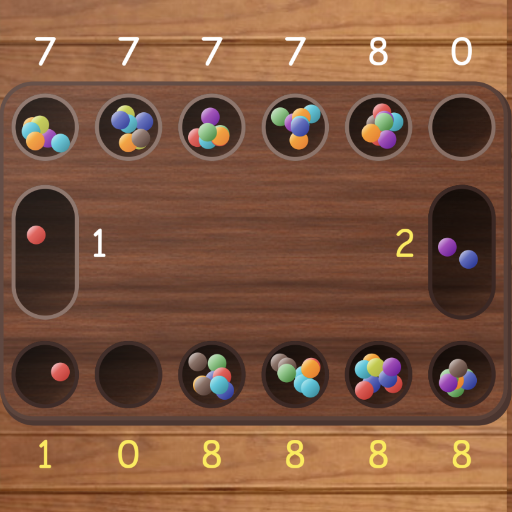
 Download
Download